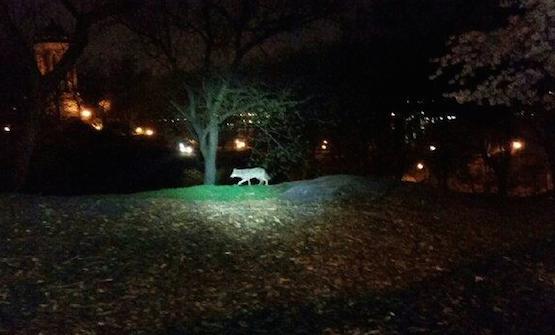
By Lisa Kava
Humans may be stuck inside today, but coyotes are still roaming around. In fact, there have been several coyote sightings in Central Park in recent months. A poetry-inspiring coyote was spotted in the south end of the park a few weeks ago. A coyote was seen numerous times just inside the park near West 82nd Street back in December.
Why are coyotes living in Central Park? How did they get there? Are these the same animals as coyotes found in the West? One local group has been studying that very issue, and explained to us what’s going on.
The Gotham Coyote Project was founded in April, 2010, to study the urban coyote and answer questions like these. The organization is comprised of researchers, educators and high school students. Much of the research takes place right on the Upper West Side at the American Museum of Natural History (AMNH).
Back in February, before the shutdown, West Side Rag met with Mark Weckel, Co-Founder of the Gotham Coyote Project and Assistant Director, Youth Initiatives at AMNH, and Neil Duncan, Collections Manager for the Department of Mammalogy, along with scientists and high school students working on the project.
According to Weckel and Duncan, the first known coyote in New York City was reported in 1995 in the Bronx. The first known coyote in Manhattan was spotted in 1999 in Central Park.
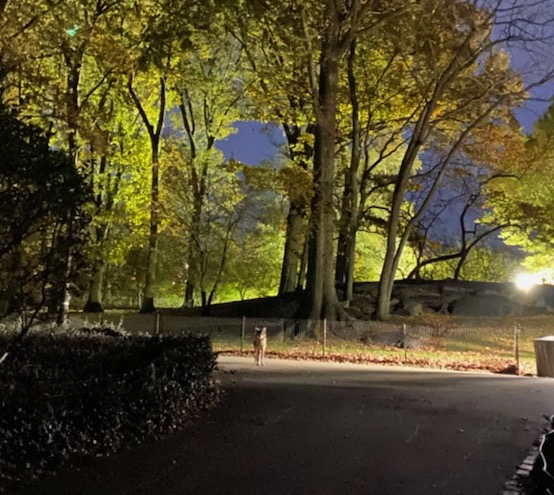
“Coyotes are a species of the western United States and were not traditionally associated with any northeast regions,” said Weckel, who explained that coyotes began to migrate east in the 1940’s. “As they moved east breeding occurred between western coyotes and eastern wolves,” said Duncan. “Genetics of northeast coyotes are thus mixed with wolves making the northeast coyote genomically different from the western coyote.”
Researchers at The Gotham Coyote Project have identified a large breeding population in the Bronx, where many large wooded parks exist. “The coyotes are able to stay under the radar there and that is the secret to their success,” said Weckel who believes that all NYC coyotes are related to one another and make up a multigenerational family.
The team at the Gotham Coyote Project tracks coyotes in the Bronx using collars with built in GPS chips. Working with the Parks Department and expert trappers to tranquilize the coyotes, they place collars safely on the coyotes. The GPS chips then transmit the location data to computers at the museum. The Bronx coyotes were found to roam in quiet sections of the parks, both near water and in the woods, but always away from humans.
According to Weckel and Duncan, urban coyotes could potentially live in quiet industrial spaces within NYC in addition to parks. “The truth is we don’t know if there are coyotes in these places. The basic necessities are shelter, food and water and they can live anywhere these needs are met,” said Weckel. Coyotes tend to be nocturnal, but may be seen at sunrise and sunset, and hunt during the day, according to the website.
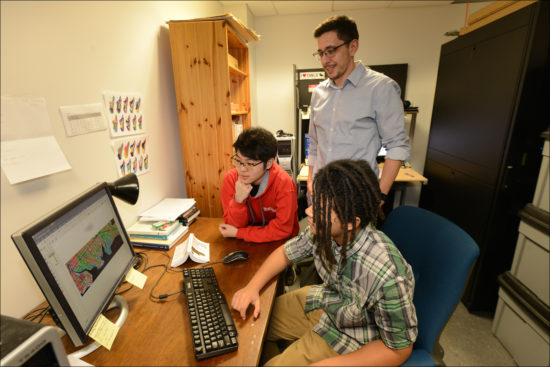
High school student-researchers, who are part of AMNH’s Science Research Mentoring Program (SRMP), have been studying coyote scat (poop) under the microscope in order to learn about the urban coyote diet. “We have found a bit of everything…racoon, squirrel, birds,” said one student.
Currently, while the museum is closed to the public due to Covid-19, students and educators continue to meet virtually through Skype and Google Hangouts. The students are enthusiastic about their work.
“We began to understand more about NYC coyotes and how they may be changing to adapt to the city,” said Mariel Uzhca a high school junior.
“I think the best part of working with coyotes in NYC is the knowledge that there are coyotes living and breeding in the city. People often see the wilderness and the cities as two completely different things…It’s crossovers like these that remind us that these landscapes are actually two neighboring parts of the same ecosystem,” said Hunter Dillard-Jakubowic a high school senior.
The Gotham Coyote Project relies on the public to report coyote sightings which can be done by clicking the “report a sighting” button on the home page here. But Weckel and Duncan want to emphasize the importance of giving coyotes space, and to refrain from feeding coyotes.
“Coyotes are wild animals and we want to instill that in everyone,” said Duncan. “They are wary of people and we want them to stay that way. Under no circumstances should people feed coyotes. If we feed them, they become less wary and that is where the potential for conflict comes in.”
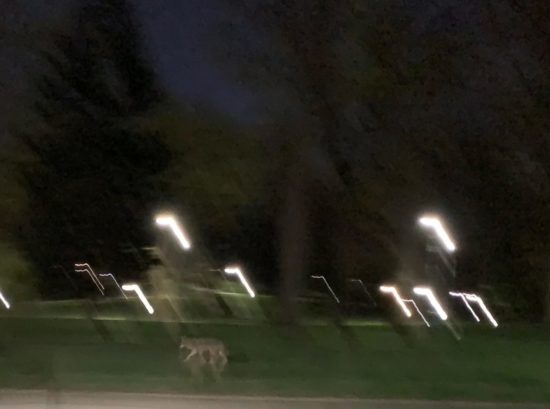
WSR checked in with the Parks Department for more information on recent coyote sightings.
“One coyote has been hanging out in Central Park for at least a year now, but we have no reason to believe the population in the park is growing,” a spokesperson wrote. “This year we’ve received 17 reported coyote sightings in Manhattan. Note that these reports are not confirmation of 17 individual coyotes being spotted, these are reported sightings, multiple reports may be for the same coyote.”
Here are some tips on co-existing with coyotes in NYC from the Parks Department:
• Do not feed coyotes. Keeping coyotes wild is the key to coexistence. Feeding coyotes can cause them to lose their natural hunting instincts and cause them to associate humans with food.
• Observe and appreciate coyotes from a distance. Though they may look similar to dogs, coyotes are wild animals. The best way to ensure both your safety and the safety of the coyote is to keep your distance.
• Protect your pets. Walk dogs on a leash and keep cats inside for safety. Do not allow your pets to play with or approach coyotes.
• Keep coyotes wary. If you are approached, make yourself look bigger by putting your arms up, and make loud noises until the coyote retreats.



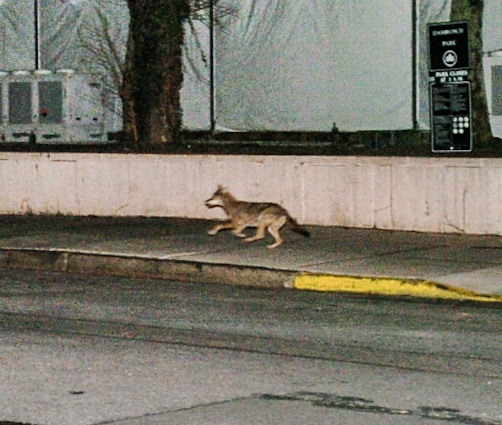
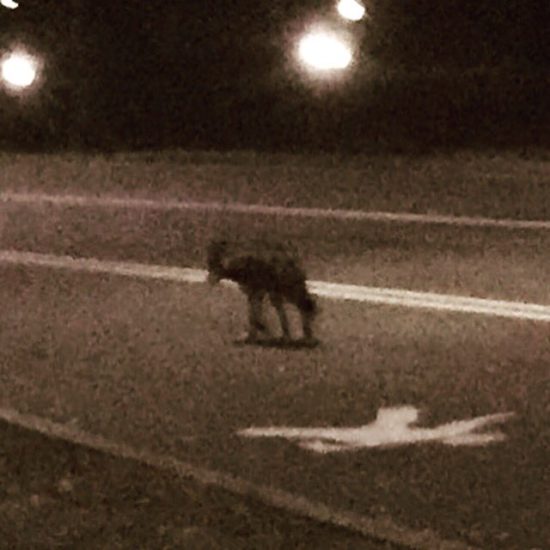



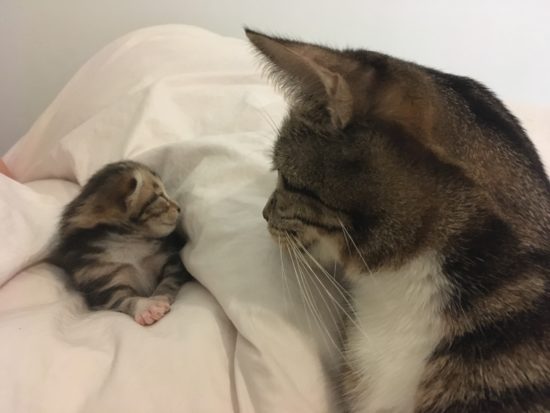


I saw one last night in Central Park a few hundred feet south of the SW entrance to the reservoir path.
If they eat raccoons, squirrels and bird there’s absolutely no reason anyone should ever be feeding them the park is filled with all of the above and they can Live a healthy life in the parks humans don’t bother them
Do we know if they eat rats? Wasn’t listed in the scat findings.
Two weeks ago while strolling in Central Park I saw Peter Coyote.
He looked tame enough and did not run away when I approached him, keeping a safe 6-8 feet social distance.
Yes, let’s assume they eat rats. Then they are protected as assets.
YO! No Coyote ain’t gonna eat dis rat!
Foist of all, me & me bruvvers NEVER gose into dat park…i means, why??? Dere ain’t nuttin dere cept a buncha trees and roks…and dem squrls all da time showin off dere fancy-shmancy fluffy tails.
As fer yorz troolee, he be a sitee critter, where deres alwaiz sumpin happnen.
Sighting: Sunday, May 10, 12:15AM on rocks outside Delacorte theater in Central Park, crouched nearly flat on rocks, about 20 feet from paved public walkway.
Young-looking, neither fearful nor aggressive; followed us for a short distance without approaching.
Beautiful animal, but I am not at all comfortable sharing the park with him/them, particularly with the Parks Department and Animal Control doing so little to keep both them and us safe.
Any coyote making Central Park its habitat should be re-located to somewhere safer.
Relocate this coyote and you’ll just free up a territory for another, and so on.
Get used to it, and keep your dog on leash.
No, it shouldn’t. Make a greater effort to get – and stay – away from it.
And the raccoons along Riversde Drive are getting very bold. Aren’t they notoriously rabid?
I wish everyone would take to heart the advice not to feed wildlife. Humans who do so are doing harm to the animal populations they claim to love and support. Feeding squirrels, raccoons, and pigeons only increases their dependency on humans and undermining their natural avoidance of humans is ultimately detrimental the species.
I hear dropping an anvil on his head or lighting a stick of TNT also works. Painting a fake entrance to a cave on the side of a wall may work in a pinch.
Leo, that’s hilarious! 🙂
Coyotes also scavange so proximity to garbage helps increase their numbers. I have mixed feelings about them in an urban context.